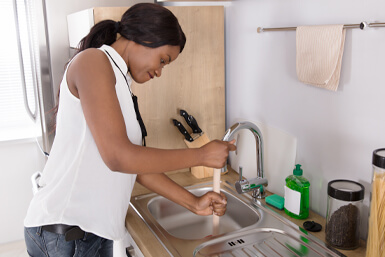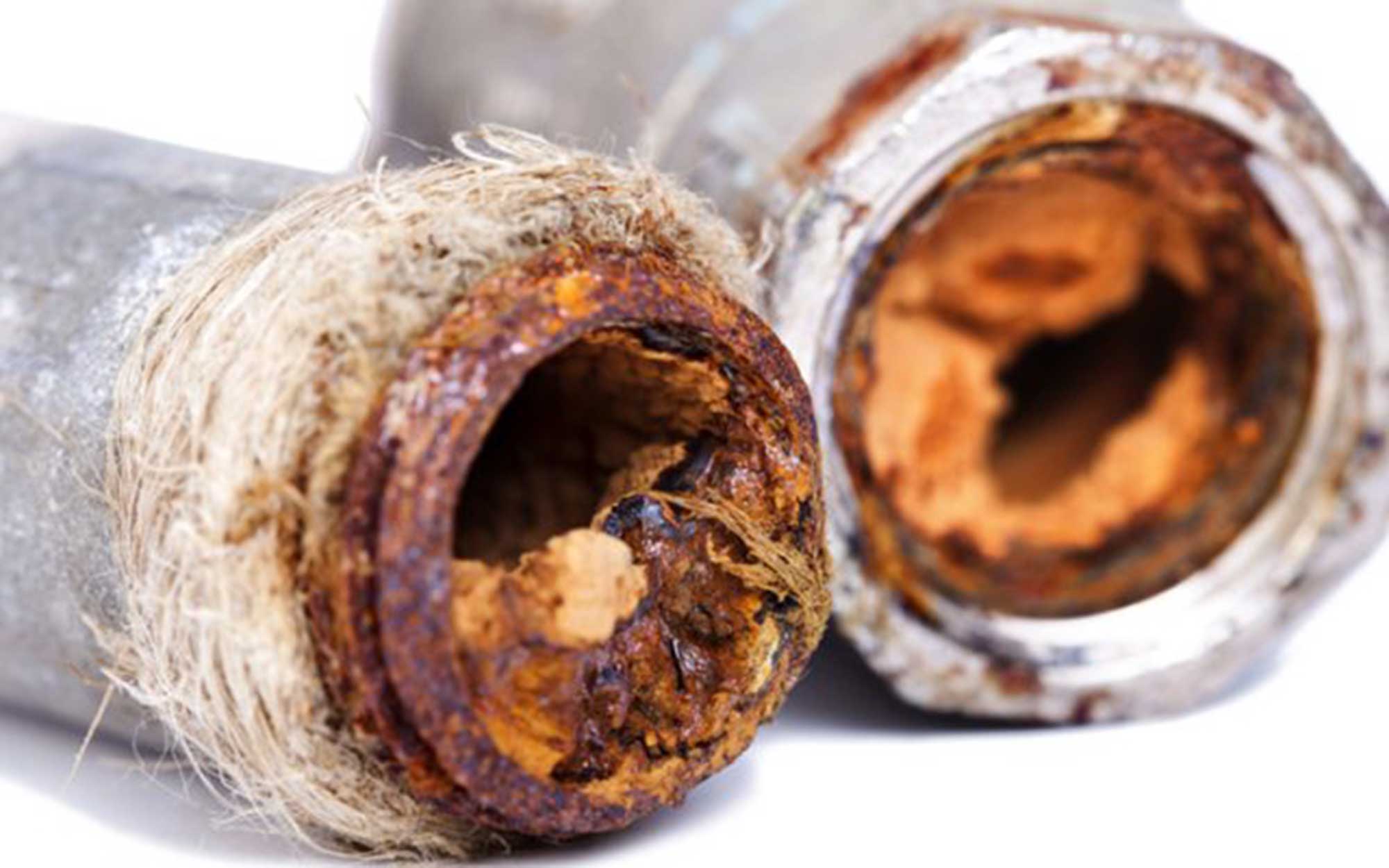Calling in the Pros: Common Appliance Problems Best Left to Plumbers
Calling in the Pros: Common Appliance Problems Best Left to Plumbers
Blog Article
What're your opinions regarding Why is My Home Making Strange Plumbing Noises?

To detect noisy plumbing, it is necessary to figure out first whether the undesirable noises take place on the system's inlet side-in various other words, when water is turned on-or on the drainpipe side. Noises on the inlet side have actually varied reasons: excessive water stress, worn shutoff and tap parts, poorly connected pumps or various other appliances, inaccurately placed pipeline fasteners, as well as plumbing runs containing a lot of limited bends or other constraints. Noises on the drainpipe side usually come from poor place or, similar to some inlet side noise, a format including limited bends.
Hissing
Hissing noise that happens when a tap is opened slightly normally signals excessive water pressure. Consult your neighborhood water company if you presume this problem; it will have the ability to tell you the water pressure in your location and can set up a pressurereducing shutoff on the incoming water system pipeline if necessary.
Other Inlet Side Noises
Squeaking, squeaking, scraping, breaking, and also tapping normally are brought on by the expansion or contraction of pipelines, generally copper ones supplying warm water. The audios occur as the pipes slide versus loosened fasteners or strike nearby home framework. You can often pinpoint the place of the trouble if the pipelines are exposed; just comply with the audio when the pipes are making noise. Probably you will certainly uncover a loosened pipe hanger or an area where pipelines exist so near flooring joists or other framing pieces that they clatter versus them. Affixing foam pipeline insulation around the pipelines at the point of contact should fix the issue. Make certain bands and also wall mounts are secure and offer appropriate assistance. Where feasible, pipeline bolts need to be affixed to massive structural elements such as foundation walls rather than to framing; doing so minimizes the transmission of resonances from plumbing to surface areas that can magnify and also move them. If affixing bolts to framework is inevitable, cover pipes with insulation or other resilient material where they contact fasteners, and sandwich completions of brand-new bolts between rubber washers when installing them.
Correcting plumbing runs that suffer from flow-restricting limited or countless bends is a last resource that ought to be embarked on only after consulting an experienced plumbing professional. However, this scenario is rather common in older residences that may not have been constructed with interior plumbing or that have seen numerous remodels, especially by novices.
Babbling or Shrieking
Intense chattering or shrilling that occurs when a shutoff or faucet is turned on, and that generally goes away when the fitting is opened fully, signals loosened or malfunctioning interior parts. The solution is to change the valve or faucet with a brand-new one.
Pumps and also devices such as cleaning makers as well as dishwashers can move electric motor noise to pipelines if they are poorly linked. Connect such products to plumbing with plastic or rubber hoses-never rigid pipe-to isolate them.
Drain Sound
On the drain side of plumbing, the principal objectives are to eliminate surface areas that can be struck by dropping or rushing water and also to protect pipes to have inevitable sounds.
In brand-new building, bathtubs, shower stalls, commodes, as well as wallmounted sinks and containers should be set on or versus durable underlayments to reduce the transmission of noise through them. Water-saving commodes and taps are less loud than traditional models; mount them instead of older kinds even if codes in your area still allow utilizing older components.
Drainpipes that do not run up and down to the basement or that branch right into horizontal pipeline runs supported at flooring joists or other mounting present specifically problematic sound issues. Such pipelines are large sufficient to radiate substantial vibration; they likewise carry considerable quantities of water, which makes the scenario worse. In brand-new construction, define cast-iron dirt pipes (the huge pipes that drain pipes bathrooms) if you can manage them. Their massiveness consists of much of the noise made by water travelling through them. Also, prevent transmitting drainpipes in wall surfaces shared with bed rooms and also rooms where people collect. Walls consisting of drains should be soundproofed as was explained previously, using double panels of sound-insulating fiber board and wallboard. Pipes themselves can be covered with unique fiberglass insulation created the purpose; such pipelines have an impervious vinyl skin (often containing lead). Outcomes are not constantly satisfying.
Thudding
Thudding sound, frequently accompanied by shivering pipes, when a faucet or device shutoff is turned off is a condition called water hammer. The noise as well as resonance are caused by the reverberating wave of pressure in the water, which unexpectedly has no area to go. Sometimes opening a valve that discharges water quickly into an area of piping having a limitation, arm joint, or tee installation can produce the exact same problem.
Water hammer can usually be cured by setting up installations called air chambers or shock absorbers in the plumbing to which the problem valves or faucets are linked. These tools allow the shock wave created by the halted flow of water to dissipate airborne they have, which (unlike water) is compressible.
Older plumbing systems may have short vertical areas of capped pipeline behind wall surfaces on tap runs for the same function; these can ultimately loaded with water, reducing or destroying their efficiency. The remedy is to drain pipes the water supply entirely by shutting down the main water supply valve and opening all taps. After that open up the major supply shutoff and also shut the taps one at a time, beginning with the tap nearest the shutoff and also finishing with the one farthest away.
If Your Plumbing is Making These Sounds, There’s a Problem
A Bang or Thump When You Turn Off a Faucet
If a loud bang or thump greets you each time your turn off running water, you likely have a water hammer. A water hammer occurs when the water velocity is brought to a halt, sending a shock wave through the pipe. It can be pretty jarring — even worse, damaging to your plumbing system. All that thudding could loosen connections.
Strange Toilet Noises
You’re so familiar with the sounds your toilet makes that your ears will be attuned to anything out of the ordinary. Fortunately, most unusual toilet noises can be narrowed down to just one of several problems.
Foghorn sound:
Open the toilet tank Flush the toilet When you hear the foghorn noise, lift the float to the top of the tank If you’re ambitious, you can remove the ballcock valve and disassemble it to replace the washer. Or you can more easily replace the ballcock valve entirely. This device is relatively inexpensive and available at most any hardware store.
Persistent hissing:
The hissing following a flush is the sound of the tank filling. It should stop once the tank is full. But if the hissing continues, it’s likely because water is leaking out of the tank. The rubber flap at the bottom of the tank can degrade, letting water slip through and into the bowl. That’s why the tank is refilling continuously. Fortunately, this is an easy fix:
Cut the water to the toilet by closing the shutoff valve on the water supply line. Flush the toilet to drain the tank. Disconnect the flapper Attach the new flapper Gurgling or bubbling:
Gurgling or bubbling suggests negative air pressure in the drain line, likely resulting from a clog. As air releases, it causes the water in the toilet to bubble. This could either be a minor issue or a major one, depending on the clog’s severity. Clogs can be caused by toilet paper or more stubborn obstructions such as tree roots. If you can’t work out the clog with a plunger, contact a professional plumber for assistance because a clog of this magnitude could lead to filthy and unsanitary sewage backups in your sink bathtub.

I am very interested in How To Fix Noisy Pipes and I really hope you enjoyed my blog posting. I beg you take the time to promote this write-up if you enjoyed it. Thank-you for going through it.
Book Appointment Now Report this page